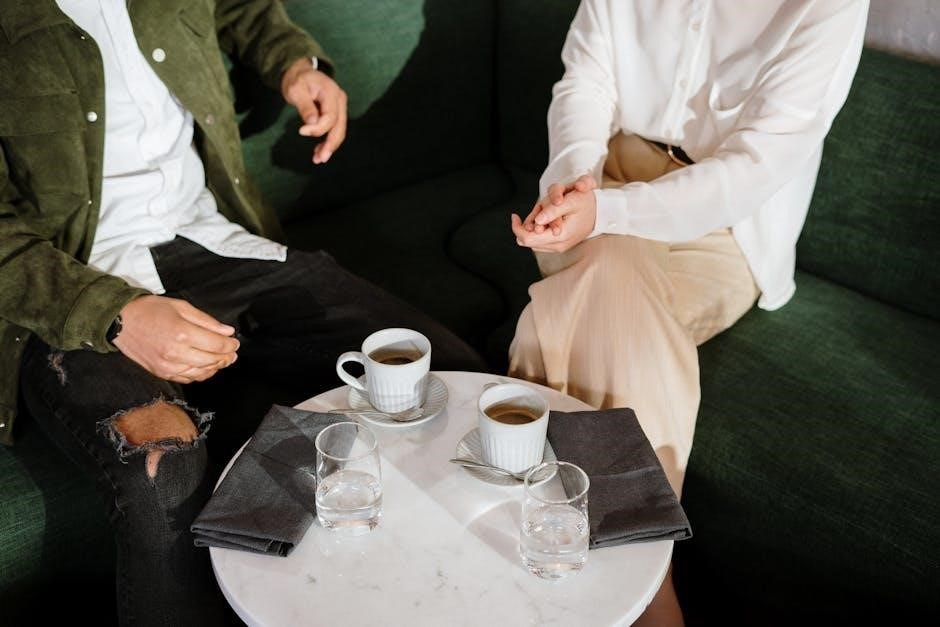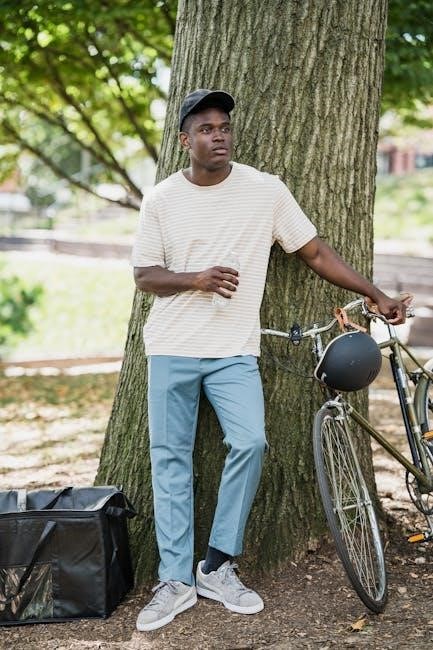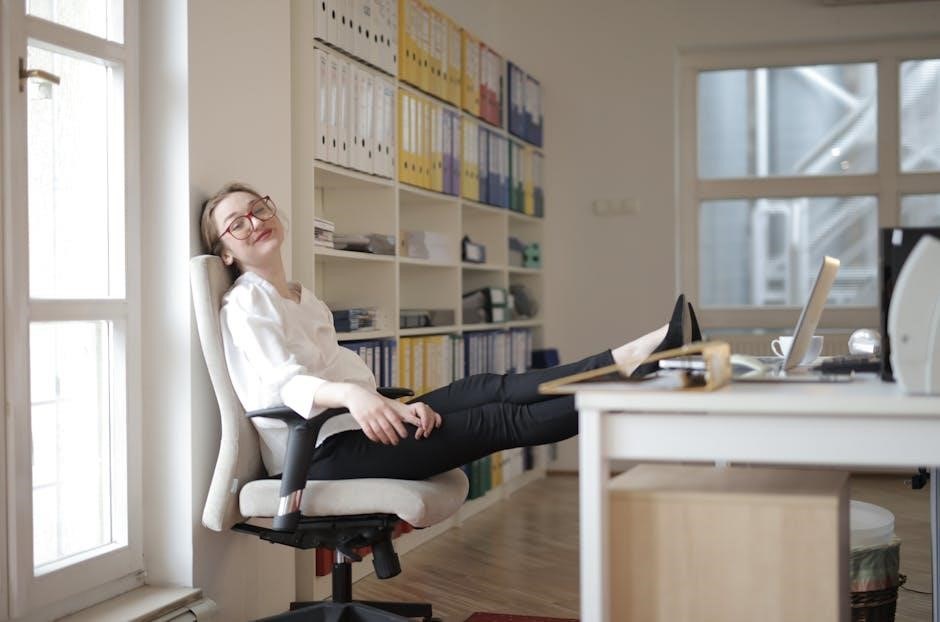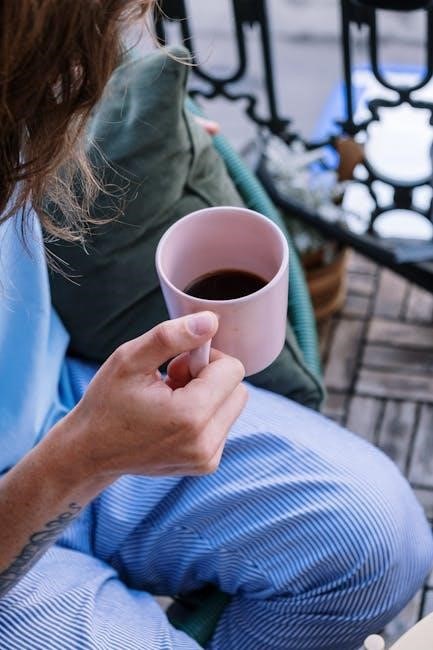pant break guide
Discover the essentials of pant breaks, a crucial element in tailoring and fashion․ Learn how to achieve the perfect fold for style and comfort in this guide․
1․1 What is a Pant Break?
A pant break refers to the fold or crease at the bottom of trousers where the fabric folds over the shoe․ It determines how the pants sit on the footwear, blending style and functionality․ The break can vary in depth, from a sharp crease to a soft fold, and is influenced by factors like fabric type, pant style, and personal preference․ A well-executed break enhances the overall appearance of an outfit, creating a polished look․ Understanding the concept is essential for tailoring and styling, as it impacts both aesthetics and comfort․ This guide explores the nuances of pant breaks, helping you make informed choices for your wardrobe․
1․2 Importance of Pant Break
The pant break is crucial for both aesthetic appeal and functional comfort․ It determines how trousers sit on the shoes, impacting the outfit’s polished appearance․ A well-executed break enhances style by creating a sharp, tailored look or a soft fold, depending on preference․ Functionally, it affects comfort around the ankles and prevents fabric from bunching up․ The break influences style versatility, with full breaks suiting formal wear and slight breaks offering a modern look․ It also balances proportions with shoe choice and affects the pants’ silhouette․ Personal style expression varies, from precise creases to relaxed folds․ Fabric type and cultural trends further shape its importance․ Ultimately, the break subtly yet significantly impacts the outfit’s overall look and feel, making it essential for both style and comfort․

Understanding Different Types of Pant Breaks
Explore the diverse styles of pant breaks, each designed to enhance your outfit’s appearance and comfort․ Understanding these variations helps tailor your look to perfection effortlessly․
2․1 No Break
The “no break” style refers to pants with no visible crease or fold at the hem, creating a sleek, modern look․ The pant leg skims the shoe without any bunching, offering a streamlined appearance․ This style is ideal for slim-fit or tailored trousers and is commonly seen in contemporary fashion․ It works best with flat-front designs and smooth fabrics, avoiding bulkiness․ The no-break look is versatile, suitable for both formal and casual settings, making it a popular choice for those seeking a clean, minimalist aesthetic․ It emphasizes a sharp, polished silhouette without the traditional break, appealing to fashion-forward individuals who prefer understated elegance in their attire․
2․2 Slight Break

The “slight break” is a subtle crease or fold at the bottom of the pant leg, creating a minimal drape without excess fabric․ This style offers a balance between modern minimalism and classic tailoring, providing a polished yet understated look․ It works well with chinos, dress pants, or jeans, and is versatile enough to suit various body types․ The slight break is ideal for those who want a clean appearance without the bulkiness of a fuller break․ It’s also practical for active lifestyles, as it resists excessive wrinkling․ This break complements both formal and casual outfits, making it a timeless choice for everyday wear while maintaining a sharp, tailored aesthetic․
2․3 Medium Break
The “medium break” offers a balanced look, with a moderate crease at the pant leg’s bottom․ It sits between the slight and full break, providing a classic, timeless appearance․ This break is versatile, complementing both formal and casual styles․ It works well with dress pants, chinos, and even some jeans, offering a polished yet approachable aesthetic․ The medium break is particularly flattering for those with average to athletic builds, as it creates a balanced proportion․ It’s practical for everyday wear, offering comfort without sacrificing style․ This break is ideal for individuals seeking a traditional look that isn’t too flashy but still maintains a sharp, tailored finish․
2․4 Full Break

The “full break” is the most pronounced type of pant break, creating a deep, visible crease that folds over the shoe․ This style is ideal for formal occasions and tailored looks․ It works best with structured fabrics like wool or heavy cotton, as they hold the crease well․ The full break adds a sophisticated, elegant touch to pants, making them stand out in professional or luxurious settings․ It’s often preferred by those who appreciate a sharp, polished appearance․ However, it may not be suitable for casualwear or slim-fit pants, as it can overwhelm the design․ The full break is perfect for tall individuals or those with larger frames, as it creates a balanced, proportional look․
Choosing the Right Break for Your Pants
Choosing the right pant break involves considering style, body type, and personal preference․ It ensures comfort and a polished, stylish appearance․
3․1 Considering Pant Style

When choosing the right break, your pant style plays a significant role․ Formal pants, such as trousers or dress pants, often look best with a full or medium break, creating a sharp, polished appearance․ Casual styles, like chinos or jeans, may suit a slight or no break, offering a relaxed, modern look․ The break should complement the pant’s design, fabric, and intended use, ensuring a balanced aesthetic․
For example, slim-fit pants typically pair well with a slight break to avoid bulk, while loose-fit pants can handle a medium or full break without looking overwhelming․ Matching the break to the pant style ensures both functionality and visual appeal․
3․2 Considering Body Type
Your body type significantly influences the ideal pant break․ Taller individuals can pull off longer breaks, creating balance and proportion, while shorter individuals may prefer shorter breaks to avoid overwhelming their frame․ For athletic builds, a medium break offers a balanced, streamlined look without adding bulk․ Petite individuals often benefit from a slight or no break, as excessive fabric can make their legs appear shorter․
Broader body types may find a medium to full break more flattering, as it creates a more proportional silhouette․ Conversely, narrower frames might opt for a slight or no break to maintain a sleek, tailored appearance․ Ultimately, the break should enhance your natural proportions and create a harmonious balance with your physique․
3․3 Considering Personal Style

Your personal style plays a pivotal role in determining the ideal pant break․ Classic styles often lean toward medium or full breaks for a timeless, polished look, while modern aesthetics might favor a slight or no break for a sleek, streamlined appearance․ Vintage-inspired outfits may embrace a full break to create a retro feel, especially with cuffing․ Casual styles can opt for a relaxed, medium break, while formal wear typically demands a crisp, tailored look with minimal break․ Footwear choice also influences this decision, as bulky shoes pair well with full breaks, while sleek shoes complement slight breaks․ Ultimately, the break should reflect your unique taste and how you want to present yourself․

How to Achieve Your Desired Pant Break
Mastering your pant break involves tailoring, fit adjustments, and styling techniques․ Ensure your pants align with your body and personal aesthetic for a polished, professional look․
4․1 Buying the Right Size and Fit
Choosing the correct size and fit is the foundation of achieving your desired pant break․ Always measure your waist and inseam accurately to ensure proper proportions․ Slim-fit pants create a cleaner look with minimal fabric, while regular or relaxed fits offer more comfort․ Consider the fabric’s drape and stretch, as these factors influence how the pants sit on your body․ If possible, try pants on before purchasing to assess the fit․ Pay attention to the length, as it directly impacts the break․ A tailored fit ensures the pants skim your body correctly, making it easier to achieve the desired break․ Consulting a tailor can help refine the fit for optimal results․
4․2 Using Fabric and Stretch
Fabric choice significantly impacts the pant break, as different materials drape and hold creases differently․ Wool and linen fabrics naturally create a crisp break, ideal for formal styles․ Cotton and denim offer a softer, more relaxed look․ Stretch fabrics, like elastane blends, provide flexibility and maintain shape, reducing wrinkles․ Treated fabrics, such as wrinkle-resistant or Teflon-coated, retain their structure, enhancing the break․ Consider the season and lifestyle; breathable fabrics suit warmer climates, while heavier ones are better for cooler weather․ Blends often offer a balance between structure and comfort․ The right fabric ensures the pant break looks intentional and polished, complementing the overall style and fit․
4․3 Techniques to Break In Pants
Breaking in pants effectively creates a natural-looking break․ Start by wearing them regularly to allow the fabric to mold to your legs․ For a quicker method, dampen the pants and sit or walk to shape the fabric․ Ironing the crease while slightly damp helps set the break․ Folding the pants at the knee overnight can enhance the crease․ Stretching the fabric gently while wearing them improves flexibility․ For stubborn fabrics, steam can soften fibers, making it easier to form the desired break․ Consistency is key; repeated wear and proper care will eventually create a sharp, polished look that enhances the overall style and fit․

Maintaining Your Pant Break
Maintaining your pant break involves steaming to preserve creases, folding or hanging to retain shape, and avoiding excessive sitting that causes wrinkles over time․
5․1 Washing and Care Tips
Proper washing and care are essential to maintain your pant break․ Always wash pants in cold water using a mild detergent to prevent shrinkage and fabric damage․ Turn pants inside out to protect the exterior fabric from friction․ Avoid using bleach, as it can weaken fibers and ruin the break․ When drying, opt for air drying instead of machine drying to preserve the crease․ If ironing is needed, iron inside out on a low setting to avoid shiny spots․ Steam can also help maintain the break without flattening the fabric․ By following these care tips, you can extend the life and appearance of your perfectly tailored pants․
5․2 Storage and Organization
Proper storage and organization are key to preserving your pant break․ Store pants in a cool, dry place to prevent moisture damage and crease loss․ Use cloth garment bags or breathable fabrics to protect them from dust․ Folding pants can cause creases, so hanging is preferable․ If you must fold, do so neatly and avoid stacking too many․ Consider using clamp hangers or pants hangers with built-in clips to maintain the break․ Organize your closet by style, season, or color to ensure easy access․ Avoid overcrowding, as this can cause wrinkles and misshape the fabric․ By storing pants thoughtfully, you keep them looking sharp and maintain the perfect break․
5․3 Touch-ups and Adjustments
Maintaining the pant break often requires minor touch-ups․ Regularly inspect your pants for crease wear and wrinkles․ Use a steamer or iron on a low setting to refresh the fold without damaging the fabric․ For stubborn wrinkles, consider professional pressing․ Adjustments may be needed if weight changes or fabric stretch alters the break․ Tailors can tweak the hem or structure to restore the desired look․ Spot cleaning stains and avoiding over-drying can prevent creases from fading․ Small tweaks can make a big difference in keeping your pants sharp and polished, ensuring your style remains consistent over time․

Common Mistakes to Avoid
Steer clear of common mistakes like over-altering pants, ignoring fabric types, and neglecting lifestyle needs, ensuring a perfect fit for enhanced style and comfort․

6․1 Over-Breaking Pants
Over-breaking occurs when pants are excessively folded or creased, often due to improper tailoring or over-altering․ This can lead to an unflattering, rumpled appearance and may damage the fabric over time․ To avoid this, ensure your tailor understands your desired break and resist the urge to over-manipulate the fabric․ Test the break by sitting, standing, and walking to gauge its natural drape․ Regular maintenance, like steaming or light ironing, can help preserve the break without overdoing it․ Remember, balance is key—aim for a clean, sharp fold that enhances your style without looking forced or exaggerated․
6․2 Ignoring Fabric Type
Ignoring the fabric type is a common mistake when determining pant breaks․ Different fabrics behave differently; for instance, wool and cotton hold creases well, while denim and twill may resist sharp folds․ Linen and synthetic fabrics often lack structure, making it difficult to achieve a clean break․ Overlooking fabric type can result in a poor fit or an unflattering appearance․ Always consider the material’s natural drape and crease retention before styling․ For example, heavy fabrics like canvas may require a deeper break, while lightweight fabrics like silk should have a subtle crease․ Tailors and stylists emphasize fabric type as a critical factor in achieving the desired pant break․
6․3 Not Considering Lifestyle
Not considering lifestyle is a significant oversight when styling pant breaks․ Active individuals may need more flexibility in their pants, favoring a slight or medium break for ease of movement․ Professionals in formal settings might opt for a crisp, sharp crease, while those in casual environments can embrace a relaxed look․ Climate also plays a role; heavier fabrics in colder climates may require a deeper break, whereas lighter materials in warmer climates benefit from a softer fold․ Additionally, lifestyle habits, such as frequent travel or outdoor activities, influence how pants are styled․ Always align your pant break with your daily routine and preferences to ensure practicality and comfort․

